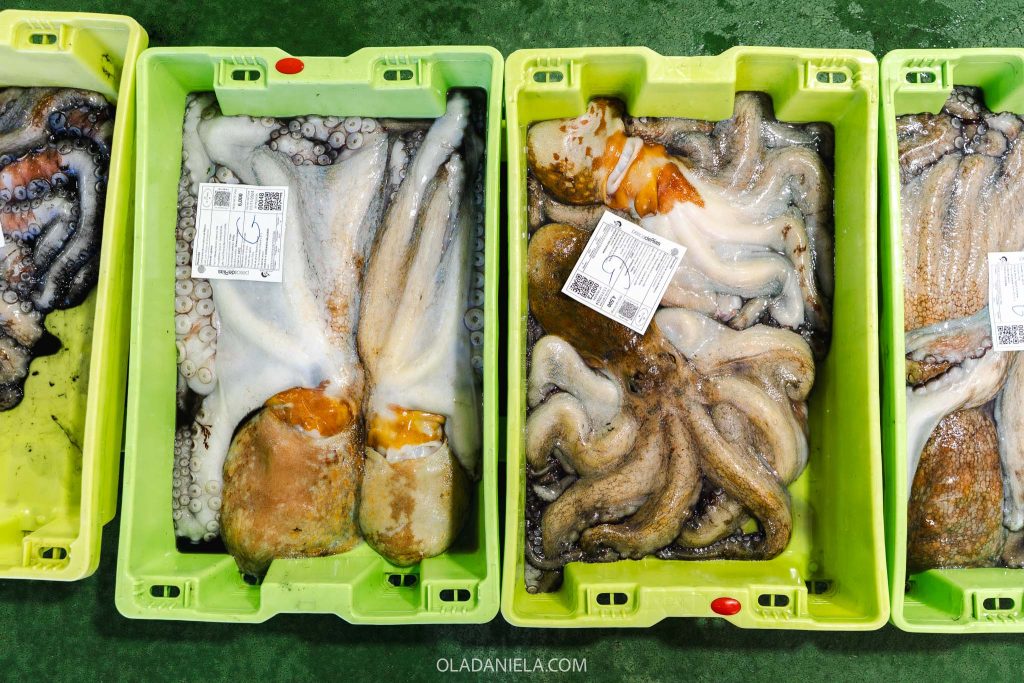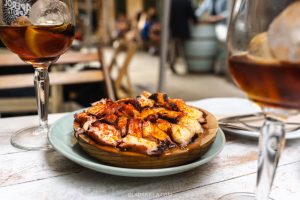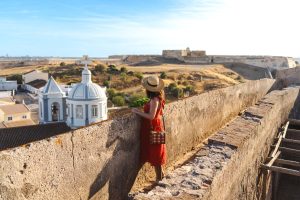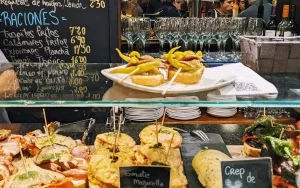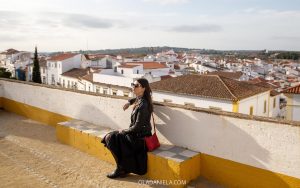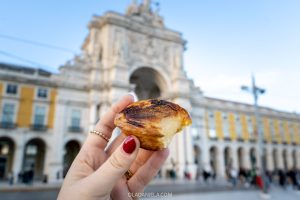One by one a young fisherman is slapping octopuses on a giant scale. He’s tallying up the day’s catch: some 37 boxes of polbo (as it’s known in Galician) weighing nearly 300kg.
It’s a fairly quiet sunny Monday in November with just a dozen or so people milling around the Lonja de Malpica, the fishing village’s daily auction that kicks off each weekday at 4.30pm sharp. We showed up a little bit early hearing that this private auction is one of few open to the public – it is, and it isn’t.
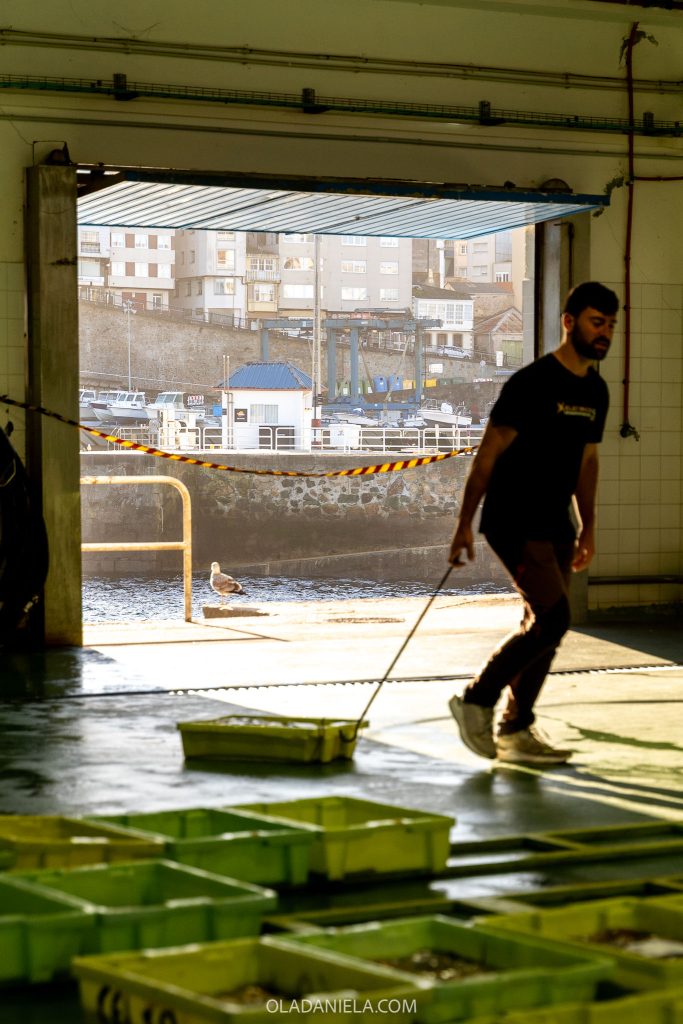
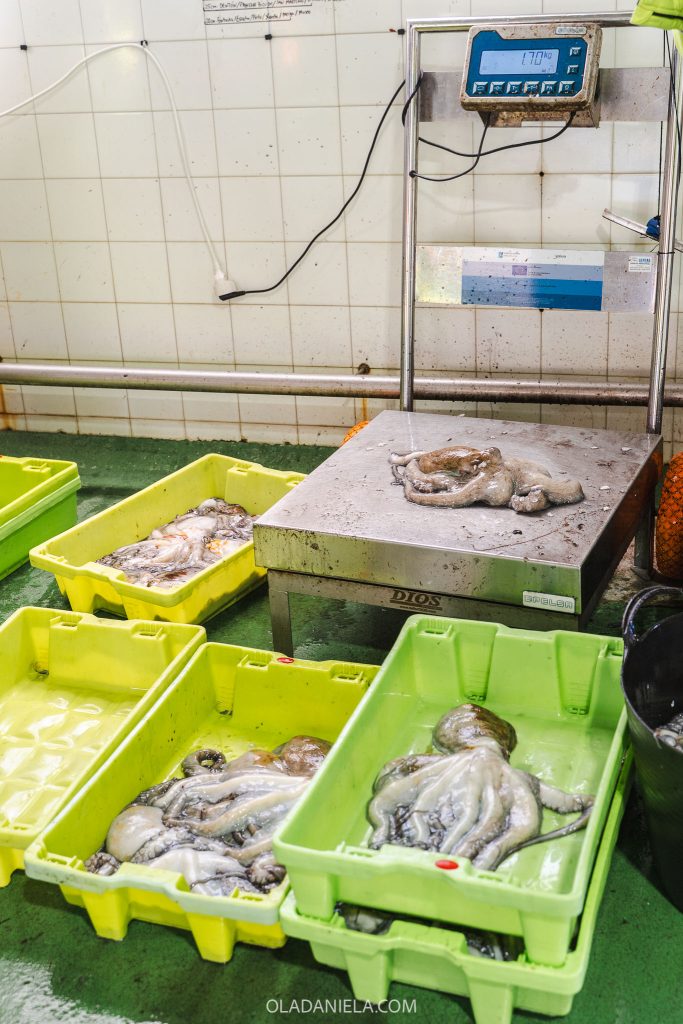
With a polite request, we were told we had two minutes to whiz around the rows and rows of boxes before the action kicked off. Some of the shiniest, most vibrant, freshest looking fish I’ve ever seen were peeping back at me. And I’m someone who enters every market hall in Portugal (where I live) and wherever I happen to travel.
Soon enough “señora morena” (brown-haired lady, that’s me) was asked to leave the auction house, which meant slipping back under the rope and watching from one of the large open garage doors on each side.
Contents
ToggleMalpica’s 4.30pm fish auction
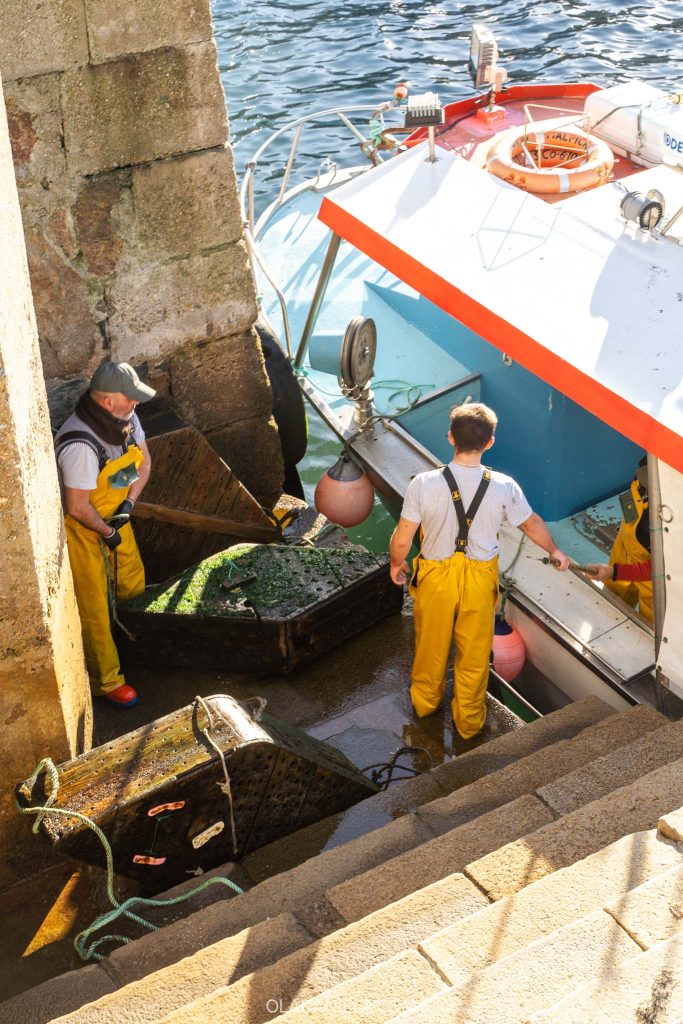
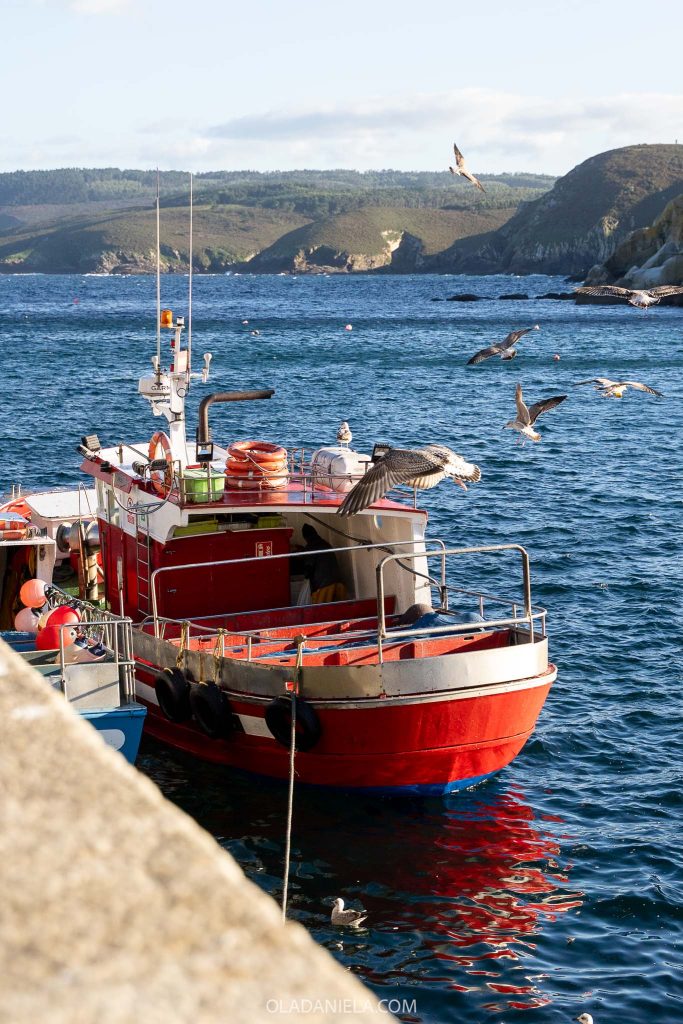
I’d heard the Malpica de Bergantiños had the biggest port for octopus fishing along the Costa da Morte (Coast of Death) of Galicia, the Spanish state known for its fresh seafood.
I’d also read this was one of the last auction houses to do things the old-fashioned way – meaning they shout the price of the fish, starting high and going down, in Galician.
Instead a tall man with a deep voice yelled out and two digital TVs starting counting down from €20 per kilo for polbo, the Galician word for octopus. A word closer to Portuguese (polvo) than Spanish (pulpo).

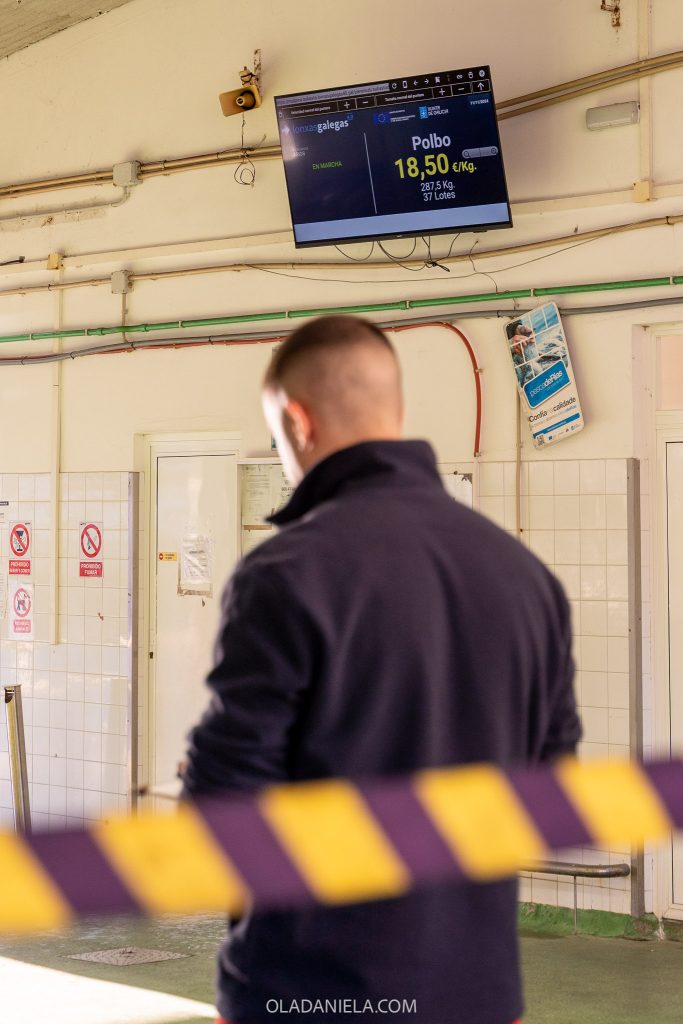

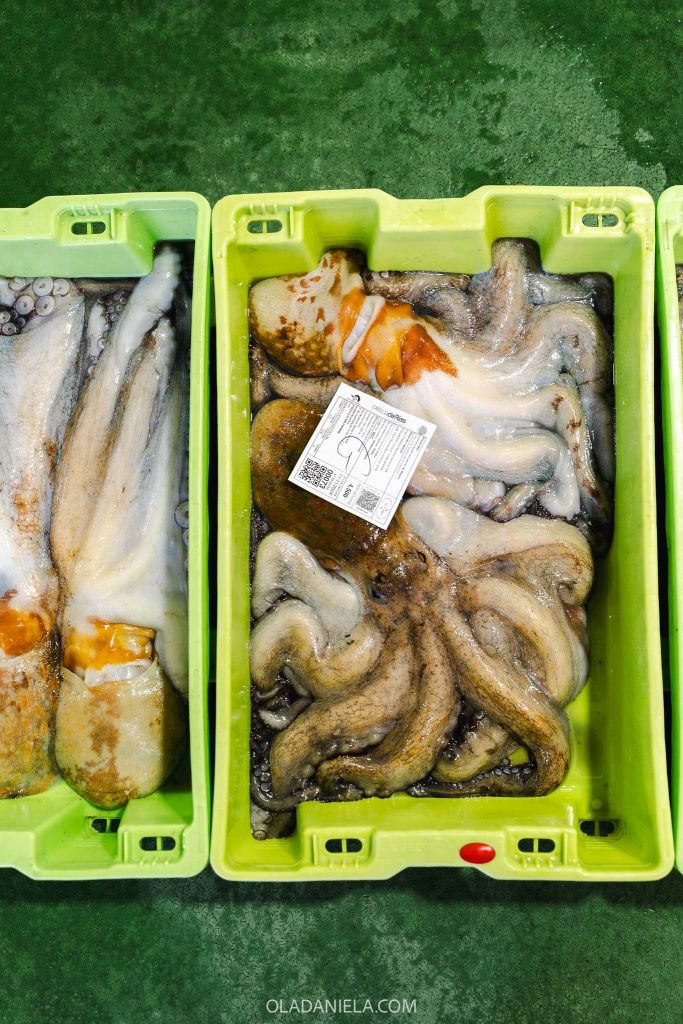
As for the buyers? Well, only half a dozen people seemed to be weighing in. First off the bat was a lady who seemed to buy up half of the 300kg on offer. Once she’d shouted out, halting the price around €13.30, she stepped onto the floor and lifted the octopuses one-by-one to inspect.
She clearly wanted the best octopus in the lot with all eight legs and little damage. After she’d taken her pick, the man yelled again and the numbers on the screen started counting down. Others interjected and bought up what they liked as the mother-and-daughter duo dragged their takings to their big white van.
From auction to backdoor sales
Once at the van, labeled Peixes e Mariscos Sofía, they lined up the boxes of huge glistening polbo, pulled out a scale and started selling to the public at barely inflated prices. Turns out we weren’t the only spectators – there were maybe four other people there that Monday – who bought up a couple of fresher-than-fresh octopus.
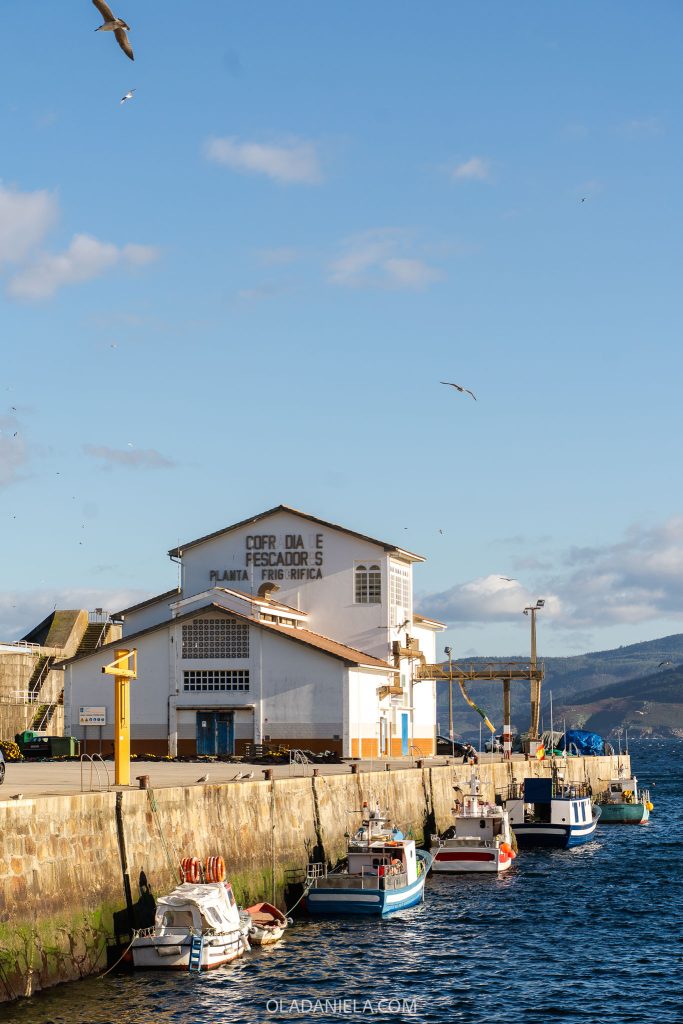
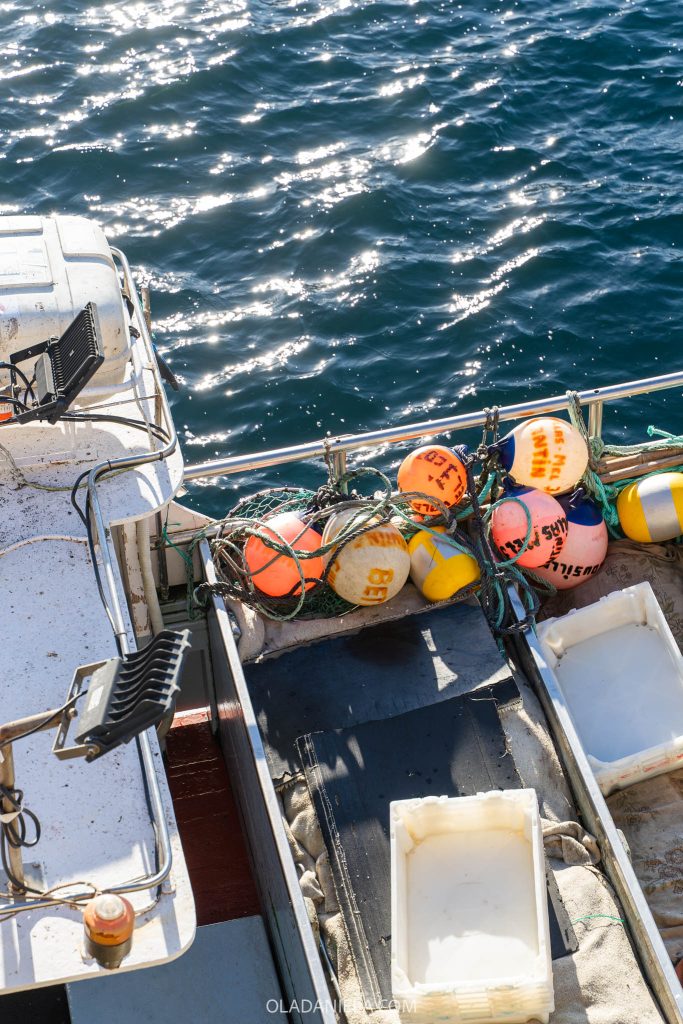
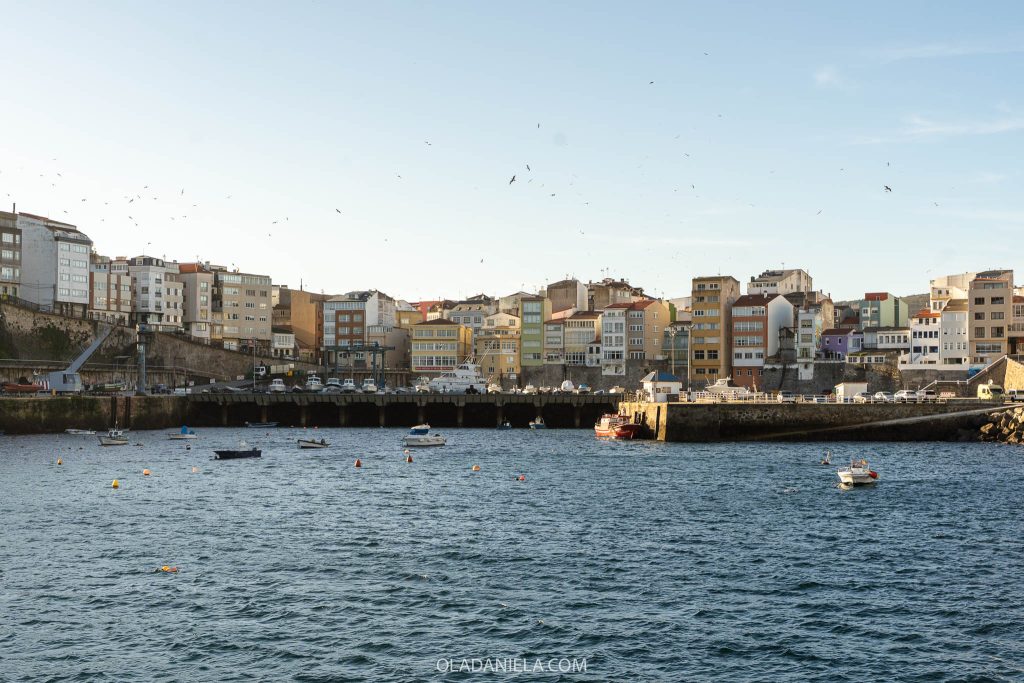
Hearing the Galician language
We’d actually driven up to Galicia, the Spanish state north of Portugal, so I could sit a Portuguese language exam. I don’t know why they didn’t open more slots in Portugal, but I’ll take any excuse for a vacation.
I chose Santiago de Compostela because Galician is the root of Portuguese, so I’d always been curious about visiting this area and hearing the local language.
Problem is, once in Galicia if you’re judged to be a foreigner they’ll speak Castilian to you. We planned to spend a few quiet days in Malpica working and studying by the sea, so it was here at the fish auction that I really heard my first consistent taste of Galician – between the fish lady and another local as he was loading fish into the van.
If you’re speaking Castilian to me you might as well speak French – I’ll be picking up just as little. But Galician? Eventually we learnt to specifically ask the locals to speak their language to us while we just replied in Portuguese. They were stoked and we had a much easier time communicating.

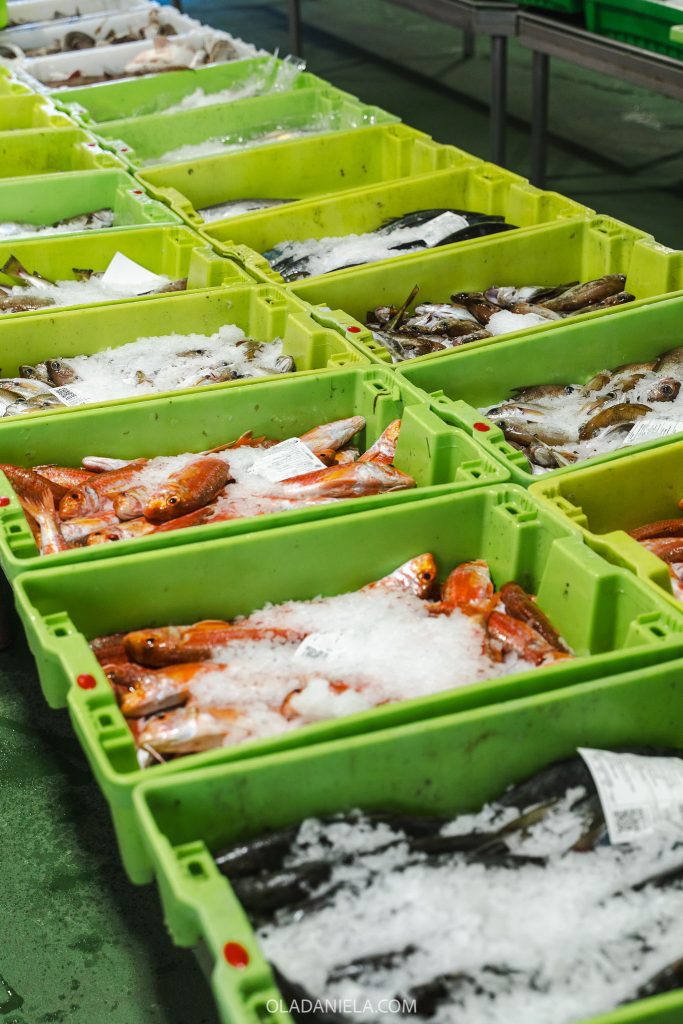

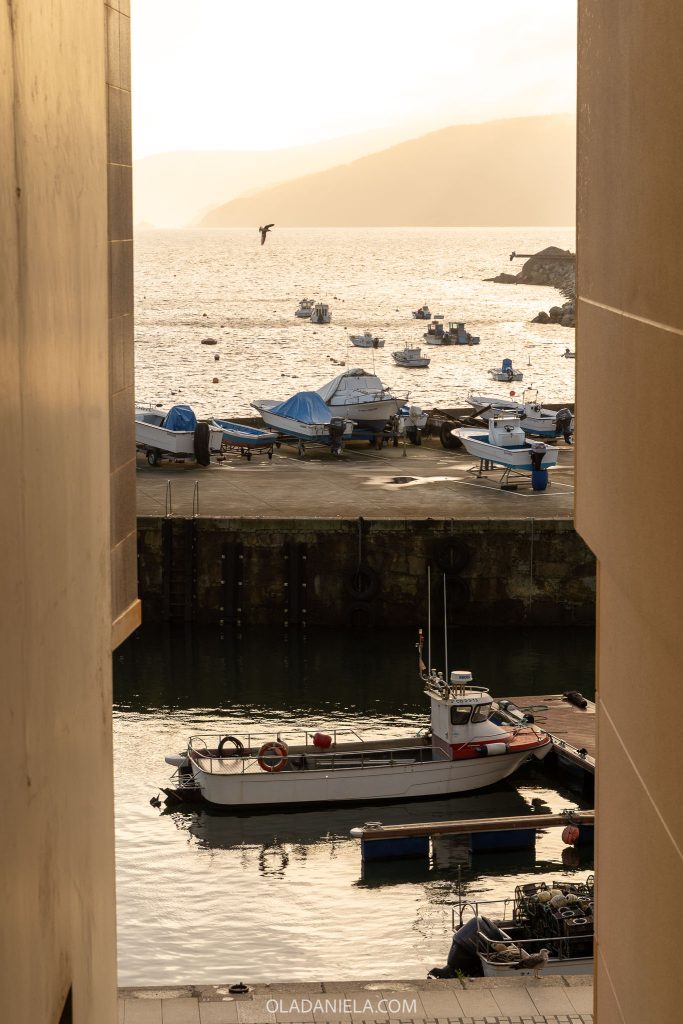
Other things to do and see around Malpica
If you find yourself in Malpica or nearby on the Costa da Morte, there’s lots to see and do if you enjoy the great outdoors. While the weather is notoriously rainy, cold, and dramatic, we encountered fairly perfect blue-sky November days the entire week.
This coast would be perfect to explore with a campervan, and with more time I would have road-tripped along the Costa da Morte towards Cape Finisterre, land’s end. The distances along this coast are surprisingly great, I guess thanks to curving local roads. It meant with a few spare mornings between work and study we stuck close to Malpica.
I’d love to return in the summer as the beaches along here are insanely beautiful with white sands. With good weather and good seafood, this is paradise.
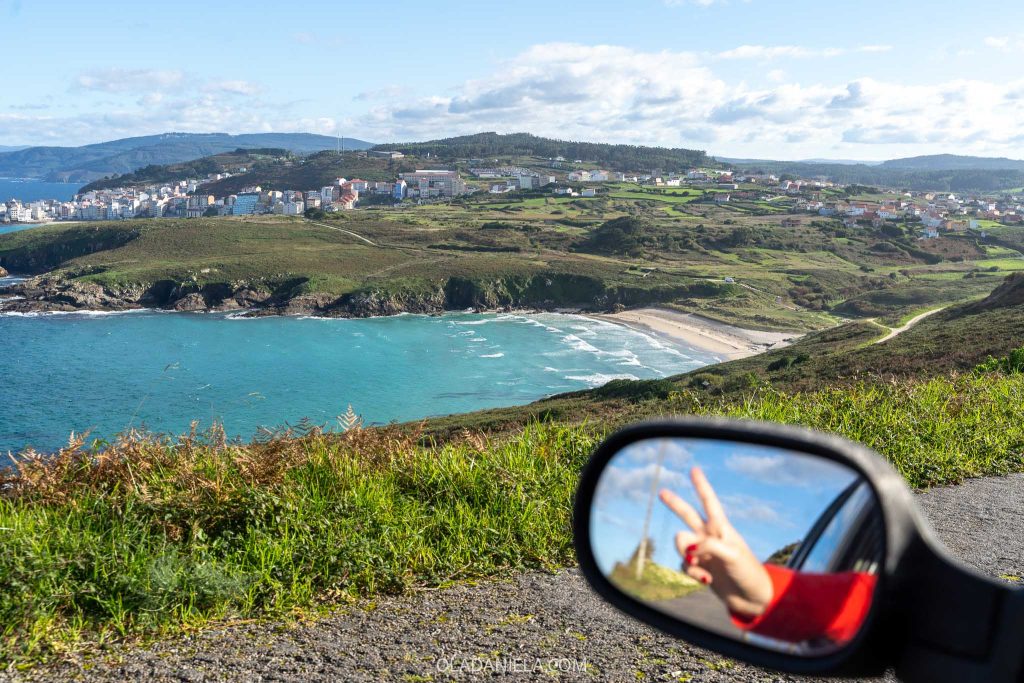
Read next… Portugal & Spain Road Trip: Where to stop between Lisbon and Seville
Santuário de San Hadrián do Mar
A very short drive from Malpica lies the Santuario de Santo Hadrián do Mar, a small church at the edge of a wild peninsula that looks back to Malpica. It’s well worth making the short drive (or walk) here from town as you get a gorgeous view. On a clear day you’ll be able to see all along the Costa da Morte, and out to the nearby islands of Sisarga Grande, Sisarga Chica and Illa Maria.
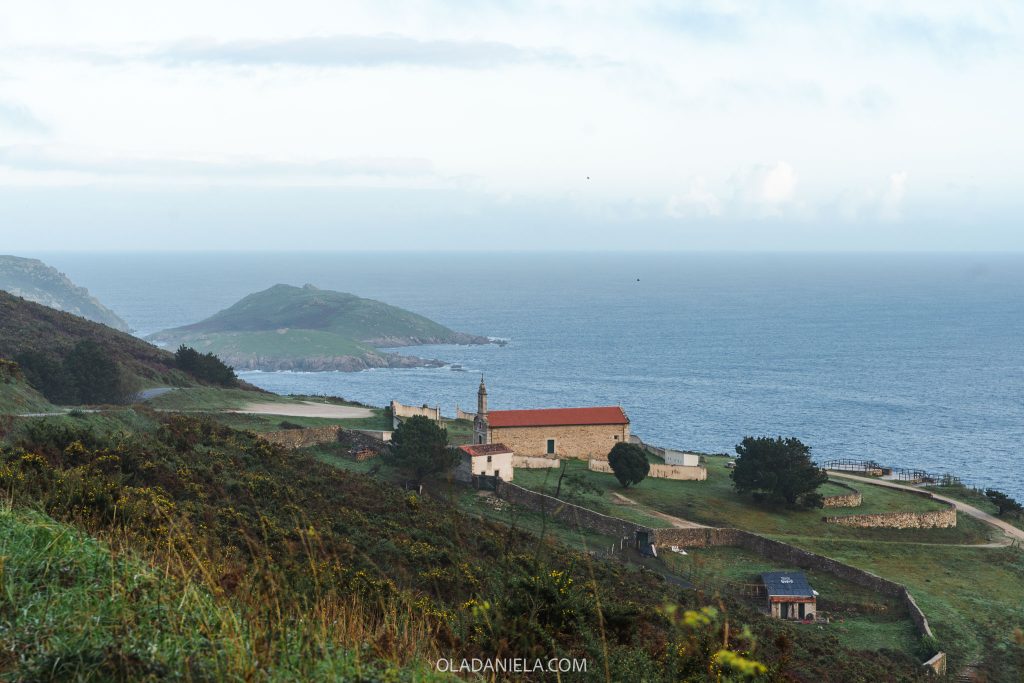
Faro de Punta Nariga & the Camiño dos Faros
There’s a famous hiking route in Galicia, starting in Malpica and ending 200 kilometres (125 miles) later in Finisterre. O Camiño dos Faros (The Lighthouse Way) is an eight-stage walk that follows the coastline, taking in many of the lighthouses that dot the rocky peninsulas of the Costa da Morte.
We stopped by the beautiful Faro de Punta Nariga, a lighthouse built in 1997 to imitate the shape of the bow of a ship. When we arrived there was a Spanish film crew building a set for a TV show. We went for a little walk close to the lighthouse to see some of the strange, wind-swept rock formations here.
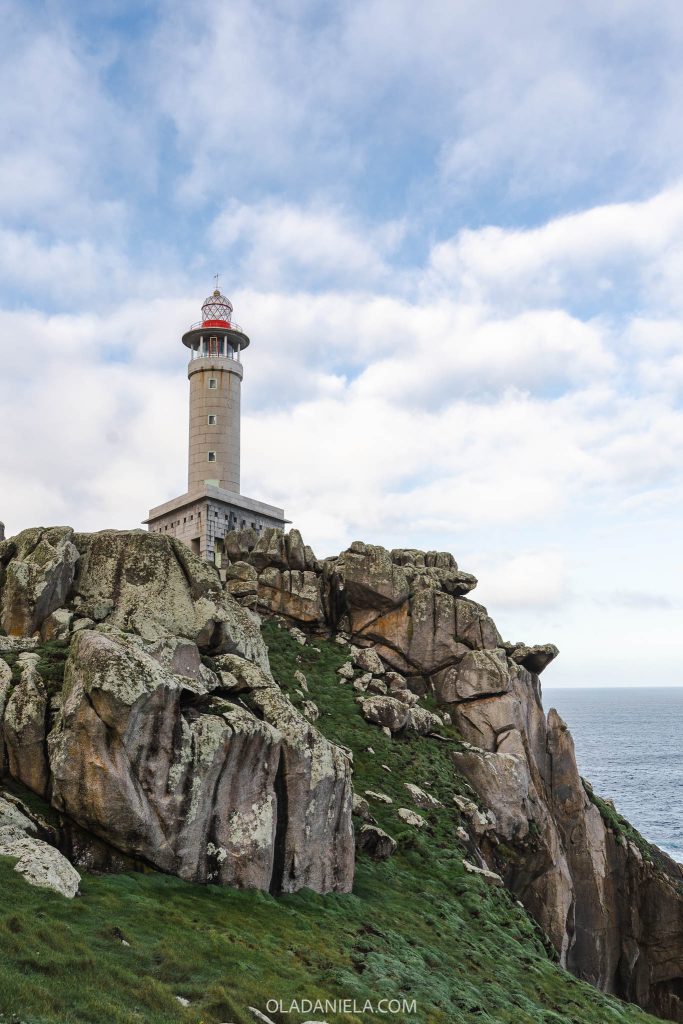
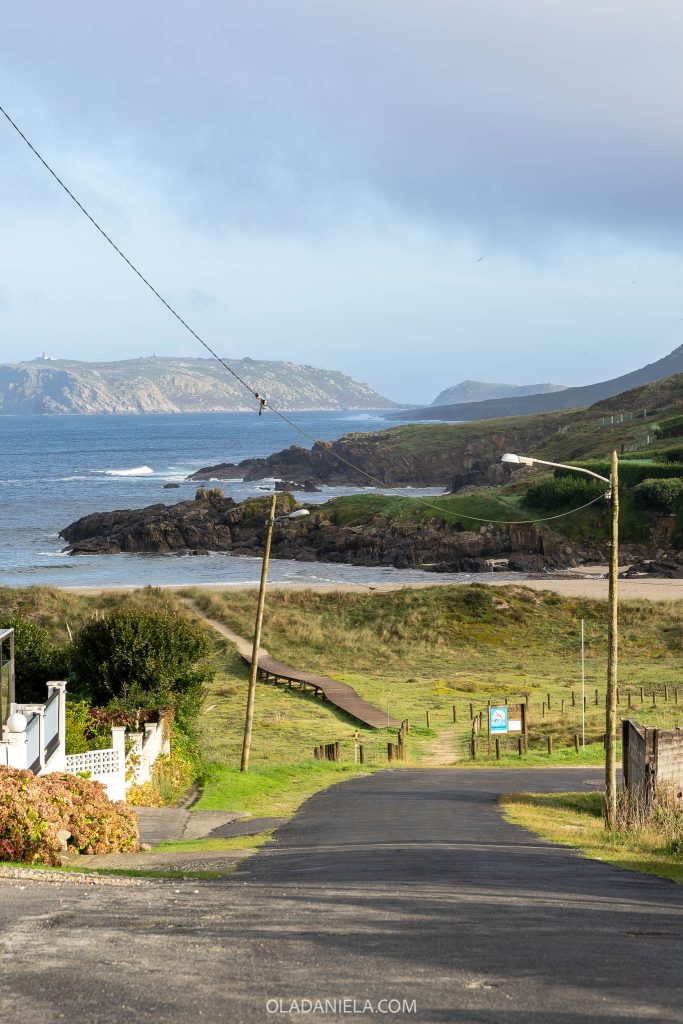
Muiños da Ribeira (water mills) walk
There’s a series of five tiny restored watermills – Muiños da Ribeira – set along a small waterfall and murmuring stream that meets the ocean. You can wander peaceful trails around this area or cycle this route, enjoying the serenity where the grassy cliffs meet the coast. Or do what I did and drive along a hatchback-friendly dirt track that leads you right to the point.
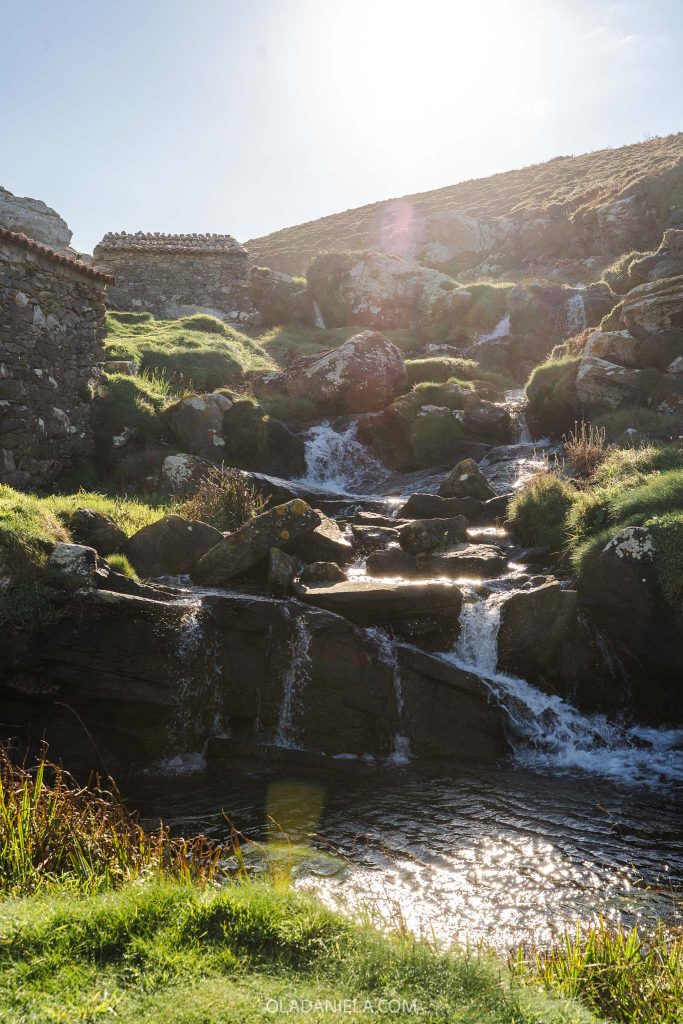
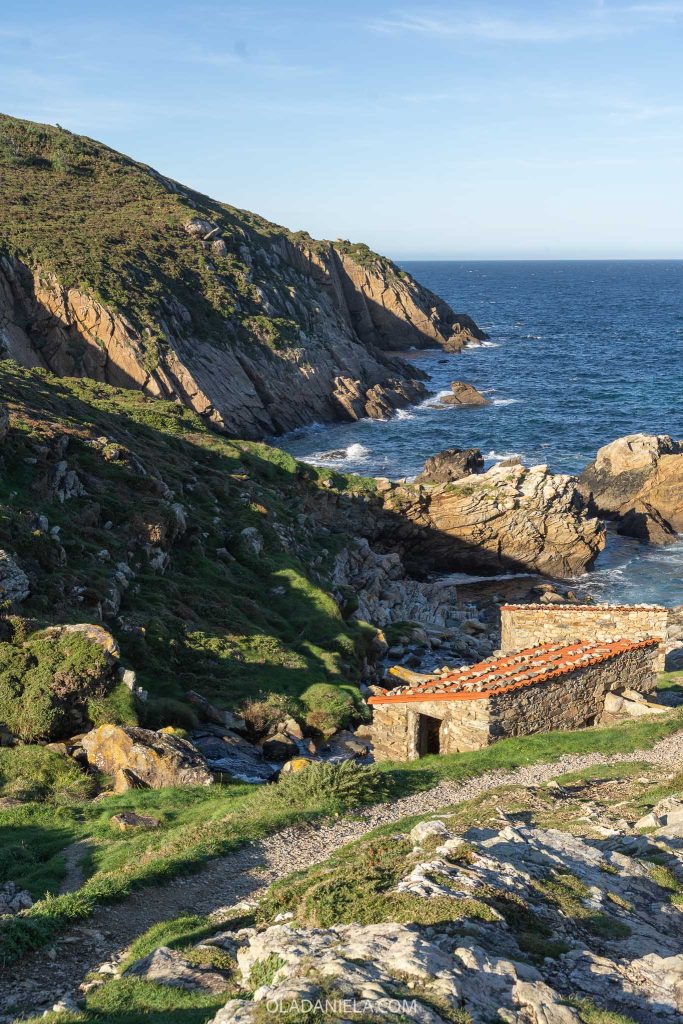
Day trip to A Coruña
Galicia’s second-largest city is just a 45-minute drive from A Coruña, so one afternoon we jumped in the car for a half-day adventure to the port city. We drove along the coastal Paseo Marítimo, taking in dramatic ocean views, on the way to the famous Tower of Hercules. This UNESCO World Heritage Site is the world’s oldest working lighthouse with Roman foundations from the 1st century – though the beautiful exterior you see these days is granite cladding from an 18th-century restoration.
From there, we dived into the old town, wandering through the main square and stopping for hot chocolate, churros and potato crisps at Bonilla a la Vista – a famous premium Spanish crisps brand in business since 1932. We window-shopped a few gourmet grocers (god, Spain does a good deli), popped into Galician ceramic brand Sargadelos, and commenced a bar-hopping adventure. First stop, a historic tapas bar called La Bombilla with a killer tortilla. Second stop, a cool wine bar called Victoria with tapas piled high on the bar. Third stop, dinner at A Taberna de Cunqueiro.

Read next… Where to eat in Santiago de Compostela: Best restaurants and tapas bars
Where to eat in Malpica
Panadería Forno Novo
I always try to visit a local bakery and try local specialties, and in Galicia that means empanada gallega or Galician pie. This is almost like a sheet pie or slice – thin, buttery shortcrust dough stuffed with a savoury filling. One of the most classic is tuna with cooked onion and peppers, but other fillings include salted cod, octopus, sardines and meat. I dropped into the local bakery in Malpica to get Galician pie to eat at home with salad. Ideal!
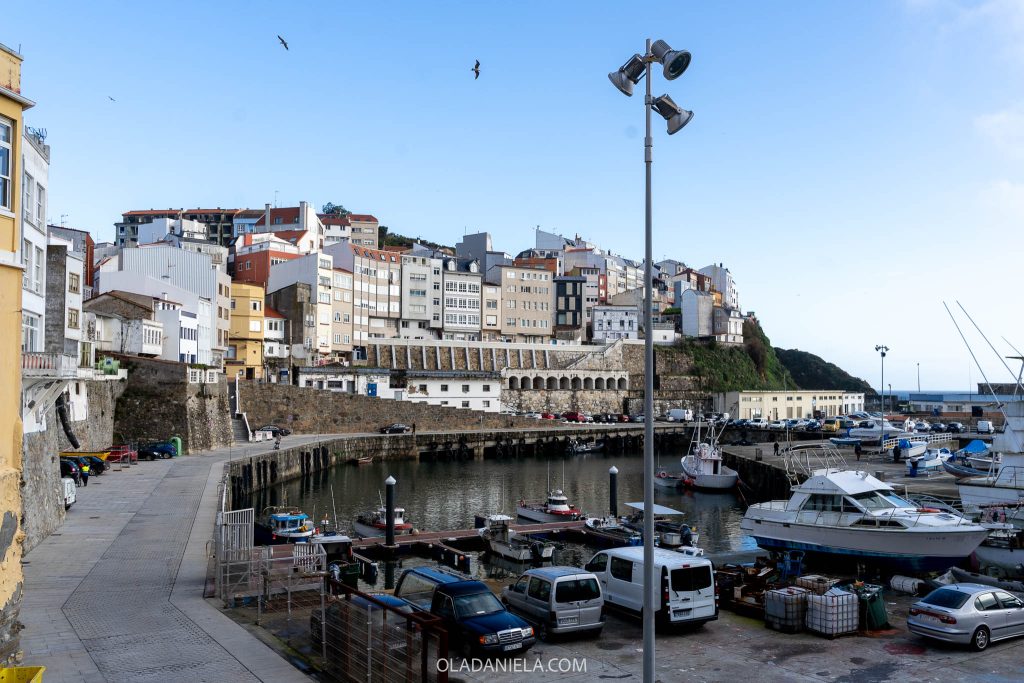
Restaurante San Francisco
This local restaurant is a gem that claims to be the “meeting point for the best barnacles on the Costa da Morte”. We did indeed try the goose barnacles here, an ingredient that’s famously dangerous to source and fetches a fortune at auction. The best way to describe percebes is that they taste like the ocean. We had a choice of two grades of percebes and were able to order just 100g, which arrived on a cute ceramic plate also shaped like a goose barnacle made by the ceramicist down the street.
San Francisco was a great restaurant to taste Galician specialties and the freshest zero-kilometre seafood from the fishing village’s port. There’s local fish, lobster, crabs, scallops and more on offer. We ended up going for habas con almejas, a dish of fava beans with clams.
Pub Leño
This seems to be a local favourite for coffee in the morning or a drink in the afternoon. Big windows offer views over the main beach of Malpica, or on a sunny afternoon a table on the terrace with the sea crashing a few metres away is heavenly.
Cafe-Bar Humboldt
I love a local café and Humboldt is a hive in the morning with charming vintage interiors. Serves a decent coffee and pan con tomate y jamon!

So, that’s what we got up with a few days in Malpica in Galicia.
Keep reading…
- Where to eat in Santiago de Compostela: Best restaurants and tapas bars
- My Guide to the Best San Sebastián Pintxo Bars
- How to spend 48 hours in Porto
- Portugal Road Trip: Where to stop between Porto and the Douro Valley
- Food Festival Guide: Best Gastronomic Events in Portugal
- Portugal & Spain Road Trip: Where to stop between Lisbon and Seville

